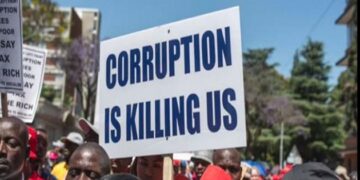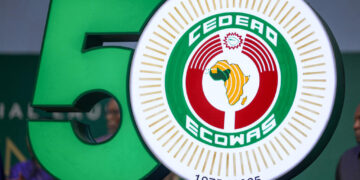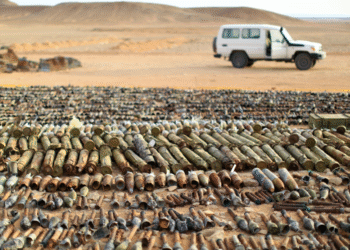Introduction
For many years, discussions about combating terrorism in Africa have primarily focused on military solutions, reforming the security sector, and controlling borders. However, a lack of attention often is paid to a crucial, underlying factor: the complex and adaptable financial networks that support these groups. It is tempting to consider terrorism financing as a technical issue that can be addressed through improved regulations and more effective tracking systems. Nevertheless, this perspective risks missing the complex geopolitical and socio-economic factors that allow these networks to thrive in the first place.
The prevailing approach to counter-terrorism in Africa has concentrated on enhancing military capabilities, often supported by significant external aid. Nonetheless, despite these initiatives, numerous areas continue to suffer from instability and violence. It’s essential to evaluate whether the current strategy genuinely tackles the fundamental causes of the issue or merely addresses the symptoms while the core problems persist. According to the FATF report concerning terrorist financing in West and Central Africa, “Terrorism is increasingly concerning for the international community, West and Central Africa are especially susceptible to terrorism. The persistent violence and conflict in this region since 2010 have raised alarms that the threats posed by terrorism could derail hard-earned economic progress, lead to political instability, and compromise future development” (FATF, 2016).
The financing of terrorism is closely linked to the vulnerabilities and power dynamics within the region. In areas marked by ineffective governance, corruption, and limited economic opportunities, terrorist organizations frequently take advantage of existing illegal economies, such as smuggling, trafficking, and resource extraction, to generate income (FATF, 2020; GIABA, 2013). For example, in West Africa, connections have been established between terrorist groups and narcotics trafficking, as well as hostage-taking for ransom, using these activities to support their operations (FATF, 2020).
Although terrorist organizations vary in nature and objectives, they all fundamentally need resources to sustain themselves, facilitate their operations, and fund different kinds of attacks. Interestingly, interventions intended to counter terrorism can unintentionally create new avenues for illicit finance, such as disrupting legitimate trade and fostering a black market for goods and services.
It is important to recognize that financing for terrorism can involve both intricate financial schemes for major assaults and straightforward models that sustain smaller factions and fund lesser attacks. The techniques and extent of financing frequently rely on the distinct objectives and operational requirements of the terrorist organization involved.
Evolving Tactics and Regional Dynamics
Recent events have shed light on the changing dynamics of terrorism financing in Africa. In the Sahel region, terrorists have increasingly turned to artisanal and small-scale gold mining (ASGM) as a key source of income. These groups take advantage of mining communities, using the informal nature of ASGM to launder money and fund their activities. The Wagner Group, a Russian paramilitary entity, has been linked to providing security in the Central African Republic in return for access to mining resources, often committing grave human rights abuses in the process (The Times UK, 2024). This pattern underscores the intersection of organized crime and terrorism, with gold surfacing as a new form of currency in global illicit enterprises.
The Financial Action Task Force (FATF) has recently updated its “grey list,” reflecting changes in countries’ compliance with anti-money laundering and counter-terrorism financing standards. Notably, Senegal was removed from the list after demonstrating substantial progress in strengthening its financial oversight mechanisms. Conversely, Algeria, Angola, and Ivory Coast were added, indicating ongoing concerns about their financial systems’ vulnerabilities to misuse by terrorist financiers (Reuters, 2024).
The Sahel region has witnessed a surge in extremist attacks, with groups like Jama’at Nasr al-Islam wal-Muslimin (JNIM) and the Islamic State in the Sahel intensifying their operations. These organizations exploit economic decline and lack of job opportunities to bolster their ranks, funding their activities through local taxation, control of natural resources, kidnapping, and trafficking. The withdrawal of Western military forces has created a security vacuum, partially filled by entities like the Wagner Group, leading to further destabilization. This environment facilitates the proliferation of terrorist financing activities, challenging existing counter-terrorism strategies (AP News, 2024).
In light of these dynamics, Niger recently declared three days of mourning following a deadly mosque attack that killed 44 people during Ramadan prayers in Kokorou. The Islamic State in the Greater Sahara (ISGS) was accused of orchestrating this massacre, which involved arson targeting homes and markets. This attack, while seemingly a direct act of terror, also has implications for terrorism financing. By creating instability and exploiting socio-political vulnerabilities, groups like EIGS can further entrench themselves in the region, making it easier to control resources, extort local populations, and engage in other illicit activities that generate revenue.
Efforts to combat terrorism financing in Africa are underway, with organizations like the Inter-Governmental Action Group against Money Laundering in West Africa (GIABA) playing a crucial role in enhancing anti-money laundering and combating the financing of terrorism (AML/CFT) frameworks across West Africa. The African Development Bank has launched a project with GIABA to improve AML/CFT regimes in West Africa, supported by a $5 million grant (African Development Bank, 2024). This initiative aims to build resilience in the region by strengthening the capacity of GIABA member states, particularly countries experiencing recovering from conflict, political instability, or economic challenges. Additionally, GIABA has engaged civil society organizations in capacity-building workshops to enhance their role in combating money laundering and terrorism financing (GIABA, 2024).
Holistic Strategies for Sustainable impact
To truly disrupt terrorism financing in Africa, a more holistic and nuanced approach is needed. This must involve:
- Recognizing the limitations of purely security-focused strategies: Military interventions by themselves are insufficient to address the issue of financing terrorism. They frequently disregard the socio-economic issues that contribute to recruitment and the flexible characteristics of networks involved in terrorist financing (Council on Foreign Relations, 2023). As indicated in the FATF report, “Conducting further studies and risk assessments at a regional level could help pinpoint specific vulnerabilities and guide government actions to disrupt terrorism financing moving forward” (FATF, 2016).
- Addressing the underlying socio-economic factors: This includes strengthening governance, promoting economic development, and addressing social grievances that make populations susceptible to recruitment by terrorist groups (Security Council Report, 2023).
- Strengthening governance and promoting transparency: Enhancing financial regulation, resource management, and security sector spending transparency is crucial. This involves building the capacity of financial institutions to identify and report suspicious transactions, a challenge often hindered by weak regulatory frameworks and informal economies (GIABA, 2013).
- Fostering international cooperation: Collaboration should be grounded in mutual respect and shared ownership, rather than the imposition of external agendas. This requires a shift from the “good pupil approach,” where external actors focus on a limited number of partner states, to a more inclusive regional strategy (Dijkstra, 2024).
- Learning from past mistakes: Past experiences highlight the risks of simplistic solutions and the need for a nuanced understanding of local dynamics. For example, the unintended consequences of military interventions in the Sahel have often exacerbated instability (Dijkstra, 2024).
- Cooperation with local think tanks and intelligence organisations: Working with local think tanks and intelligence organisations is one of the ways to deal with terrorism in West Africa. This is because they are closely embedded within local realities and may have access to sensitive information about the financial flows of active groups within the various communities. They can track money laundering operations, illicit trade, and other financial networks that fuel terrorism. Additi0nally, can contribute valuable research on how terrorist groups use local resources (e.g., natural resources, criminal enterprises, or local charities) for financing, as well as the provision of actionable, real-time intelligence on terrorist financing networks.
Conclusion
- In summary, tackling terrorism financing in Africa necessitates moving away from superficial, quick fixes to a more detailed and multifaceted approach. By confronting the fundamental weaknesses and power dynamics that allow these networks to flourish, we can foster a more robust and secure future for the area. The crucial point is to understand that the battle against terrorism financing is not merely a technical issue but a complicated political, economic, and social challenge that requires a comprehensive and cooperative strategy. Cooperation and collaboration, particularly with intelligence organisations operating outside the governmental domain is highly recommended. They can pay a key role in advising governments and institutions on creating strategies to counteract terrorist financing, and help design and assist in the implementation of regulatory reforms to ensure that financial institutions are better equipped to detect and report suspicious financial activities.
References
African Development Bank. (2024). African Development Bank, GIABA combat money laundering and terrorism financing in Africa through new project.
AP News. (2024). Escalation of Extremist Activities in the Sahel.
Council on Foreign Relations (CFR). (2023). A New U.S. Strategy for Africa: Prioritizing Governance, Development, and Local Ownership.
Control Risks. (2023). Terrorism Financing: The Overlooked Risk in Africa.
Dijkstra, H. (2024). Does the Sahel need NATO? The International Centre for Counter-Terrorism.
Financial Action Task Force (FATF). (2020). Money Laundering and Terrorist Financing Risks Arising from Trafficking in Human Beings and Smuggling of Migrants.
Financial Action Task Force (FATF). (2016). Terrorist Financing in West and Central Africa.
Ghana Web. (2025). Niger declares three days of mourning after attack on a mosque kills 44. https://www.ghanaweb.com/GhanaHomePage/africa/Niger-declares-three-days-of-mourning-after-attack-on-a-Mosque-kills-44-1976756
GIABA. (2013). Terrorist Financing in West Africa.
International Security Studies (ISS) African Futures. (2024). Africa in the World.
Policy Center. (2024). Africa and the Middle East: The Shift from Geopolitics to Geoeconomics.
Reuters. (2024). FATF Updates Grey List, Reflecting Changes in Compliance.
Security Council Report. (2023). Counter-Terrorism in Africa: Open Debate.
Standard Media. (2024). Impact of money laundering and terrorism financing on African economies.
The Times UK. (2024). Gold is the new currency in global organized crime.






























